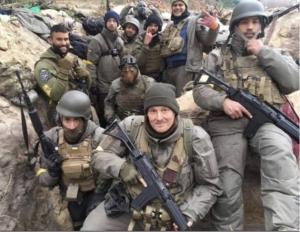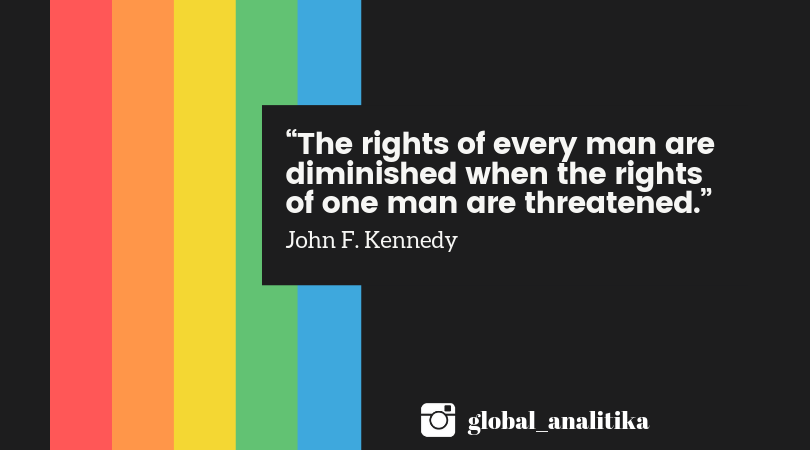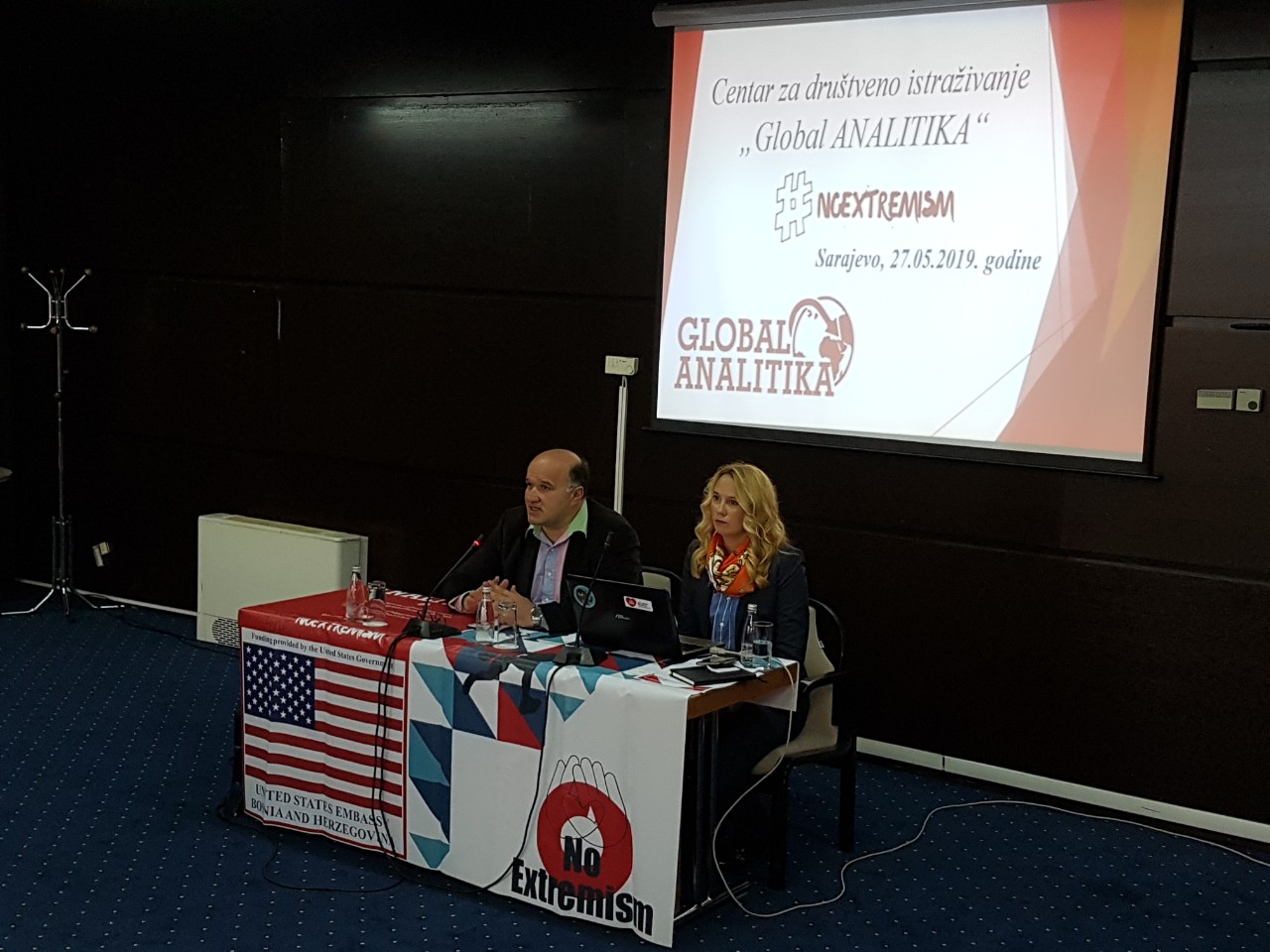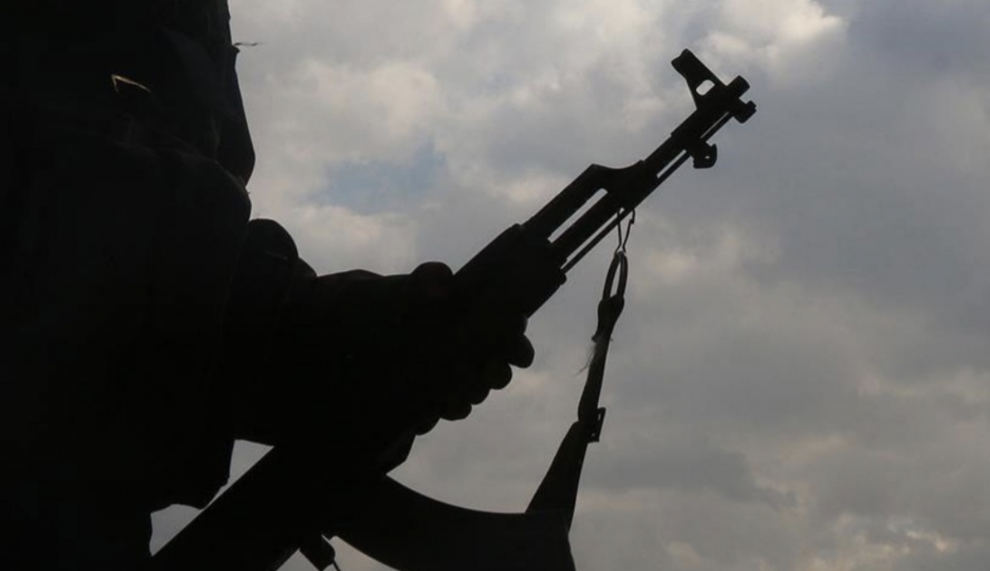Author: doc. dr. Safet Mušić
Russia’s invasion of Ukraine has again brought the phenomenon of foreign fighters to the world scale, and after that phenomenon has been particularly pronounced since 2012 in the wars in Iraq and Syria. The phenomenon of foreign fighters in Ukraine was recorded even before the Russian aggression, more precisely during the conflict in the east of that country in 2014, when foreign fighters from a dozen countries, including many European countries, fought on the side of Ukrainian and pro-Russian forces. The current situation on the Ukrainian battlefield is characterized by the unknown fate of wounded and captured fighters from the tunnel complex of the Azovstal factory, the last Ukrainian stronghold in the important port city of Mariupol, among which there are a large number of foreign fighters. The rhetoric used by Ukrainian and Russian officials when talking about captured Ukrainian fighters from Azovstal differs significantly. “Yesterday, the surrender of the extremists of the nationalist unit of Azov and the Ukrainian soldiers blocked in the Azovstal factory in Mariupol began,” described Igor Konashenkov, the official representative of the Ministry of Defense of Russia. Russian media and other officials also use the words “surrender” and the phrase that the Ukrainian army “laid down its arms.” The President of Ukraine, Vladimir Zelensky, says that it is a “humanitarian operation to save lives”, and he calls those who left Azovstal “heroes”.[1]
The latest information on the fate of some of the captured foreign fighters says that two British and one Moroccan were sentenced to death in court in the self-proclaimed Donetsk People’s Republic (DPR), as Russian news agencies reported. Brahim Saadoun – found guilty of “mercenary activities and committing actions aimed at taking power and overthrowing the constitutional order of the DPR”, as Interfax news agency quoted a court official as saying.[2]
History of the phenomenon of foreign fighters
According to Thomas Hegghammer, the definition of a foreign fighter is: “an agent who has joined the rebellion and operates within the borders of the rebellion, has no citizenship of the state of conflict or kinship with its warring factions, has no affiliation with an official military organization and is not paid”.[3]

The phenomenon of foreign fighters is not unknown throughout the history of the world, there have been many cases of individuals and groups, for different reasons and of different origins, joining the conflicts abroad. Many military historians have long considered the French Revolution to be the beginning of the age of national armies, which had exclusively citizens and which were maintained by the emergence of nation-states, universal military conscription and a new link between people and their state. Thus, the French Revolutionary Movement and the Napoleonic Wars heralded the end, as they say, of the practice of many European states to recruit foreign soldiers into their armies. In fact, multinational armies have not disappeared. During this period, Napoleon’s armies depended heavily on troops from the occupied and allied countries, while the British army recruited thousands of German soldiers. The Vienna Peace Accords (1815) were soon followed by a number of conflicts involving the recruitment of foreign volunteers: the wars for the liberation of Spanish America; Greek War of Independence (1821–1829); the Portuguese (1828–34) and the first Spanish (1835–8) civil wars; subsequent conflicts in South America; the United States Civil War (1861–1865); and the Anglo-Boer Wars, are some of the examples. Even in the twentieth century, when the concepts of nationality and citizenship were consolidated, the presence of foreign troops survived. In World War I, Germany recruited captured Irish and Polish soldiers when Garibaldi volunteers from Italy and, more broadly, people from about 50 different nationalities joined the French army. After 1917, as the conflict did not end, the progressive redefinition of the national border in Europe significantly resulted in the emergence of groups of foreign fighters, whether they were volunteers or sent by their countries.[4] Some world famous people took part in foreign battlefields, describing it mainly as a fight for freedom, a fight against evil, a fight for the oppressed. On the European scene, the English poet Lord Byron and the American writer Ernest Hemingway are well-known examples, given their involvement in the Greek War of Independence (1821–32) and the Spanish Civil War (1936–39).[5]
World War II was a conflict between alliances, an armed struggle that literally institutionalized recourse to foreign fighters both on the ground and at a high command level. In other words, the warring parties devoted much time, thought, and resources to improving the coherence they knew was necessary and even vital. They showed more or less spontaneous openness to someone else’s war, to the needs, habits and practices of others. They devised new ways to integrate foreign fighters. This was especially the case with the alliance led by Britain and the United States. Moving on to World War II, in late 1941, 43,000 citizens from occupied or neutral countries served in the Waffen-SS and Wehrmacht; the same sources on the same date gave 86,000 men to British forces. By the end of World War II, nearly a million people had served in the Waffen-SS, more than half of whom were not Germans, while over 230,000 European refugees were fighting British forces.[6]
In some wars in South America, Africa and Asia, foreign fighters also took part, but it was a small number and a phenomenon that did not significantly affect the outcome of these armed conflicts. However, the war in Afghanistan, also called the “Anti-Soviet Jihad” that was waged in the 1980s by many scientific researchers, was the first modern conflict in which a high level of participation of foreign fighters was recorded. It is estimated that there was a total of 20,000 foreign fighters in Afghanistan in the 1980s. These fighters came from Egypt, Saudi Arabia, Pakistan, and Yemen, in addition to a small number of other foreign fighters such as “Central Asians from China (presumably Uighurs), Bangladeshis, Indians, one or two from the West, North Africans, among others.”[7]
In the period after the 1980s, in some smaller war hotspots around the world, there were examples of foreign fighters joining the warring parties, but the most massive influx of foreign fighters after World War II was recorded during the war in Syria. In March 2011, pro-democracy demonstrations erupted in the southern city of Deraa, inspired by revolutions in neighboring countries against repressive rulers. When the Syrian government used deadly force to quell the insurgency, protesters demanding the resignation of President Bashar al-Assad erupted across the country. Violence escalated rapidly and the entire country was engulfed in civil war.
Hundreds of rebel groups were formed and it didn’t take long for the conflict to escalate into more than a fight between Syrians for or against Assad. Foreign forces began to take sides, sending money, weapons and fighters, and as the chaos worsened, extreme organizations with their own targets, such as Islamic State and Al Qaeda, also intervened. This has only heightened the concerns of the international community, which perceives them as a serious threat. The Syrian Kurds, who want the right to self-government but do not fight Assad’s forces, have added a new dimension to the conflict. The government’s key allies were Russia and Iran, while Turkey, Western powers and several Gulf Arab states backed the opposition to varying degrees. Russia – which had military bases in Syria before the war – launched an air strike campaign in support of Assad in 2015, and was key to a turnaround in favor of the government. Iran is believed to have sent hundreds of different troops and spent billions of dollars to help Assad. The United States, Britain, and France initially supported what they considered “moderate” rebel groups.[8]
Along with the support given to the warring parties by foreign countries, foreign fighters from all over the world, from classic adventurers, through mercenaries to religiously motivated fighters, joined the general commotion. According to UNODC data in 2015, about 40,000 individuals from over 120 countries traveled to Iraq and the Syrian Arab Republic as foreign fighters.[9]
These foreign fighters first joined rebel groups that fought against the Syrian regime, primarily the armed group Al Nusra Front, but later, with the formation of the so-called Islamic State, most foreign fighters joined this terrorist organization. The beginning of the war in Syria meant the arrival of foreign fighters on the battlefield there, and about 1,070 citizens of BiH, Kosovo, Northern Macedonia, Albania, Serbia and Montenegro traveled from the Western Balkans to Syria and Iraq, Adrian Shtuni told Voice of America, expert for international politics and security.[10] Also on the side of the Syrian regime, foreign fighters fought, hired by the Syrian government or the governments of countries that supported President Bashar Al Assad. Mercenaries, most of them from the private paramilitary company Wagner, were operating alongside Russian forces in Syria. Pavel Bajev, a researcher at the French Institute for International Relations, described the group as a Russian army from the shadows, which has a double benefit, in terms of denying Russia’s broad presence on Syrian territory and reducing its losses on the ground. The problem with fighters like the Wagner group is that they can’t always be kept under control. The number of Wagner fighters in Syria has been the subject of discussions by analysts and the media, and the online newspaper Republic.ru reports from Russian security sources that the number of Russian mercenaries in March 2016 was 2,500, including 1,600 fighters, with a budget of 350 million dollars since the start of the operation.[11] After the defeat and collapse of the Islamic State in Syria and Iraq, the next great campaign of foreign fighters took place in 2022, when thousands of them came to Ukraine, joining both warring sides.
Calls to foreign fighters for the war in Ukraine
Foreign fighters of various orientations have flocked to Ukraine, among them Europeans, Africans, Americans, white supremacists, radical religious fighters or adventurers. They came with the goal of joining one or the other warring party, which complicates things more than it makes them easier.
Estimates of their numbers vary widely depending on the sources, with no reliable source to confirm these figures. According to some estimates, thousands of them arrived, while others estimate that there are tens of thousands. However, both warring parties speak openly about their presence from time to time, as “foreign fighters are an important propaganda tool”, said James Rands, an analyst at the British Intelligence Institute. “For Ukrainians, the presence of foreign volunteers sends a signal to their troops and civilians to receive international support. As for the Russians, the Chechens and the Wagner Group mercenaries are units that come with experience from past conflicts”, Rands notes. In early March, the Ukrainian Ministry of Foreign Affairs announced that about 20,000 foreign fighters, mostly from European countries, had volunteered to fight in the ranks of national forces. Moscow, for its part, is mobilizing mercenaries from the private company Wagner and has expressed support for the deployment of Syrians.[12]
In the initial phase of the war, the presidents of Russia and Ukraine invited foreign fighters to join their forces. President of Ukraine Volodymyr Zelensky stated on February 27, 2022, that anyone who wants to join the defense of Ukraine, Europe and the world can come and fight side by side with the Ukrainians, as he stated, against Russian war criminals. “According to the Decree on military service in the Armed Forces of Ukraine by citizens of their countries and stateless persons approved by the Decree of the President of Ukraine no. 248 of June 10, 2016, foreigners have the right to join the Armed Forces of Ukraine for military service, under a contract on a voluntary basis to be included in the Territorial Defense Forces of the Armed Forces of Ukraine”, the statement noted. According to Zelensky, a special unit consisting of foreigners is being formed, called the International Legion for Territorial Defense of Ukraine. “There is no greater contribution you can make for the sake of peace”, Zelensky concluded.[13] Ukraine’s defense ministry says it has created a special unit – the International Legion – which has already begun combat missions. More than 20,000 volunteers and veterans from 52 countries have expressed a desire to join, said Brigadier General Kirilo Budanov, commander of the ministry’s Central Intelligence Agency, which will lead the legion.[14]
Speaking at a meeting of Russia’s Security Council on March 11, Russian President Putin said he supported the idea of allowing foreign individuals to join Russian-backed forces in Ukraine, after Defense Minister Sergei Shoigu said there were about 16,000 “volunteers” with The Middle East is ready to come and fight in the war on the Russian side.[15]
There is information in the media, as well as those announced by the Ukrainian government, that foreign fighters from several countries, such as Belarus, Serbia, and foreign fighters from some former Soviet republics are also fighting on the Russian side. There were attempts to bring foreign fighters from African countries with which Russia has good relations. Rows of people formed in front of the Russian embassy in the capital of Ethiopia, after information appeared on social media, that Russia was hiring soldiers from this country and that it was being paid $2,000 to join the military action, with the possibility of post-war work in Russia. Hundreds of men whose names and evidence of military service were written down by security guards in front of the embassy, and so far, there is no evidence that the Ethiopians have already been sent to Ukraine, nor is it clear whether they will go there at all.[16]
Estimates by international analysts say the influx of foreign fighters into the Ukrainian battlefield has declined significantly after the war in Ukraine dragged on for more than three months.
Structure and characteristics of foreign fighters in Ukraine
Russian President Putin stated that international mercenary law will not apply to foreign mercenaries, i.e. that he will not treat possibly captured foreign mercenaries as regular military forces. “Mercenaries generally operate outside the limits of conventional warfare and are primarily motivated by financial gain, and the Geneva Convention does not protect them”, Cristian Nitoiu, a lecturer in diplomacy and international governance at Loughborough University in London, told Al Jazeera. “It is likely that mercenaries, especially those working under the banner of private security companies such as Blackwater or the Wagner Group, would have better training in urban and guerrilla warfare than the Russian conventional army”, he added.[17]
Such attitudes caused special attention in Croatia after the Russian media published a video of a captured Croatian citizen, who tried to leave the area of the city of Mariupol with a group of fighters. This information was also confirmed by the Croatian Ministry of Foreign Affairs, and they stated that they were taking measures in order to support their citizens. Asya Metodieva, a researcher at the Institute of International Relations in Prague, told RFE/RL that part of the Russian narrative is a story about Nazis operating in Ukraine, as well as extremist groups coming from foreign countries to fight on Ukraine’s side. Metodieva told that there are no signs that far-right supporters are dominating the wave of foreign fighters. However, they are part of the wave. “According to available reports, there are members of extreme right-wing and neo-Nazi groups from Germany, Croatia and Austria who express their intention to travel to Ukraine or are already there. They join and coordinate with the Azov Battalion in the field, which is already part of the National Guard of Ukraine”, says Metodieva.[18]

Another scientist, Dr. Vera Mironova gave an important overview of this issue from her perspective on the ground. She described some of the main components within the foreign fighter groups that are fighting for Russia and Ukraine. A particularly interesting thing refers to the Chechen contingent, that there are Chechen forces on both sides and that, in the case of those who are fighting with Ukraine, there are also secular-nationalist and more religiously oriented groups. However, the difference most used among foreign fighters on the ground is the difference between those with previous experience and individuals without any military training. Most people with previous experience speak Russian, often Belarusians and Georgians, and given their expertise, they are usually on the front line, on the Ukrainian side.[19]
Two Tajiks who served in the Russian army were killed during the Russian invasion of Ukraine and were buried in Tajikistan. Sources close to the government told RFE/RL on March 23, 2022, that, in total, the bodies of at least four Tajiks killed while fighting alongside the Russian armed forces in Ukraine were returned to Tajikistan.[20] Serbian citizen Stefan Dimitrijevic died on the front in Ukraine, and according to the data of Radio Free Europe (RFE), he is not the only one from Serbia who is on the battlefield in that country. The information was confirmed on April 7, 2022, by his brother on social media, who said goodbye to him in the announcement. The case of Stefan Dimitrijevic is not the first news about the death of a Serb soldier. A few days earlier, on March 30, information about the death of Aleksandar Bijelic, an alleged lieutenant in the Russian army, was also published in Telegram groups. As it is stated, Bijelic’s father was a Serb, and his mother a Russian. This news was later published on the same profile on the VKontakte network. According to estimates from the Ukrainian embassy in Serbia in 2018, about 300 Serbian citizens fought on the battlefield in Ukraine on the Russian side.[21]
Among others, a certain number of fighters from Lithuania are fighting on the side of Ukraine. One division of Lithuanian volunteers is led by Sigitas Maliauskas, and has six Lithuanians on its team, joined by three Ukrainians. They were asked to form a Lithuanian unit that could perform autonomous tasks – reconnaissance. This includes establishing a network of contacts in their operational area, which remains under Ukrainian control, in order to have “eyes and ears” to be able to report on the movements of Russian troops, Sigitas told Lithuanian media.[22] The Ministry of Foreign and European Affairs of the Republic of Croatia (MVEP) announced the allegations of the Russian state television RT that their journalist Roman Kosarev talked to a captured Croat who was fighting in Ukraine. The Ministry has confirmed that a Croatian citizen has been captured in Ukraine.” The MVEP has information on the captured Croatian citizen and continues to work on resolving the case in cooperation with the Ukrainian authorities. Due to the sensitivity of the situation, we cannot disclose more detailed information at this time”, the Ministry said.[23]
The first reports of killed foreign fighters fighting on the side of Ukraine were published in late April, the report includes one American citizen, two British citizens and four Georgian volunteers, as confirmed by family members of the dead or the government of these countries.[24] This is followed by other reports on the deaths of foreign fighters from several different countries, which confirms the assumptions that citizens from dozens of countries are fighting in Ukraine. U.S. citizen Willy Joseph Cancel, a 22-year-old former Marine, was killed in a fight against Russian forces, his family confirmed to multiple media outlets, becoming the first known U.S. citizen known to have been killed in fighting in Ukraine. During the same period, officials confirmed that a British citizen and a Danish citizen had been killed in Ukraine.[25] Although different media reports spoke of many right-wing extremists joining the Ukrainian army, according to researchers from Oslo, this has not been confirmed. Researchers have found little evidence to show that more than a few far-right extremists traveled to Ukraine after the Russian invasion in February. The largest contingent of such extremists appears to have come from France and Germany, with an estimated 30 potential foreign fighters arriving from the two countries.[26]
Of particular interest was the information that Israeli citizens are participating in the fight against Russian and pro-Russian forces in Ukraine. At the beginning of the war, the Ukrainian embassy in Israel called on the Israelis to voluntarily join the fight in Ukraine, but the post on Facebook was soon deleted. More than a dozen Israelis reportedly joined the fighting after the embassy called for weapons, but there has not been much news of Israeli fighting in Ukraine since. Thus, on April 27, 2022, The Jerusalem Post published a story and video about alleged Israeli fighters in Ukraine. The video circulates on social media, and in the video, one of the soldiers said in Hebrew: “We want to thank the people of Israel, the government of Israel, for helping us to fight the Russians in this difficult war”. The video was posted on a popular Twitter account of a Canadian citizen fighter.[27]
It is evident from all the above that there is a very colorful picture of the overall characteristics of foreign fighters in Ukraine. The first thing we can pay attention to is based on which side they are fighting on, then which countries they come from, the motive for coming, then what their status was in the past – background, structure of their personalities, level of previous military experience, culture, and education.
Disinformation on the topic of foreign fighters
One of the characteristics of the previous period of the war in Ukraine is the intensive campaign of media warfare carried out by both sides, and the topic of foreign fighters is often represented in these media appearances. The topic of foreign fighters is more exploited by Russian officials, as well as through the media and social media, where unverified information are often placed. We have had an example of Russian Foreign Minister Sergei Lavrov saying that militants from Kosovo, Albania and Bosnia and Herzegovina were recruited to ‘throw Russia off balance’.[28] This information provoked a lot of reactions in these countries, and it turned out that it was not accurate.
On June 18, 2022, the Ministry of Defense of Russia published new information on the number of foreign fighters fighting on the Ukrainian side, and most of the countries on the list rejected that information and declared it to be false news. According to the stated number of mercenaries, the current record holder is Poland, from which 1,831 people arrived. In second place among European countries is Romania, from which 504 people arrived in Ukraine. In third place is the United Kingdom, from where 422 mercenaries arrived. Canada is the first from the American continent with 601 mercenaries. The next country on the list is the United States, from where 530 foreign fighters arrived.

The BiH Ministry for Security for BiH and security agencies have information about the departures of two BiH citizens to the battlefield in Ukraine, “one on the side of Ukraine, and the other from Russia”, stands in an official announcement by the Ministry on Twitter. Thus, the Russian data on the departures and deaths of BiH citizens on the battlefield in Ukraine are false, the BiH Ministry adds.[29] Other countries in the region have also announced that these are inaccurate data that aim to harm those countries in the international framework, as well as in interstate relations.
All this points to the assumption that in the coming period we can expect new information from the Ukrainian battlefield that will be related to the topic of foreign fighters for various reasons and with the intention of achieving certain goals at the international level, depending on which party reports.
Challenges and issues that remain
Meanwhile, fighting continues on the Ukrainian battlefield and information coming in every day about the deaths of hundreds of soldiers on both sides, and among the dead there are again foreign fighters who have decided to join one of the warring parties. What the data so far say is that foreign fighters are still at war in Ukraine, that some of them are returning to their homelands, for treatment after being wounded, and some are returning permanently. Also, according to available data, dozens of foreign fighters from more than 12 countries have died on the battlefield in Ukraine so far, it is believed that dozens of them were captured after the capture of the city of Mariupol by the Russian army.
Some of the countries from which foreign fighters arrived on the Ukrainian battlefield have legal regulations that prohibit their citizens from going to foreign battlefields, while in other countries it is not a criminal offense. However, ambiguities remain after the return of these foreign fighters to their home countries, and some of these ambiguities may relate to the security situation, because in the past we had several examples of foreign fighters being hired for liquidation by organized criminal groups in order to eliminate rival clans or to take part in other crimes. So even after this war, challenges remain in terms of the role of foreign fighters in the Ukrainian war, their impact on the security situation in their home countries, further engagements and movements of foreign fighters. For security agencies, questions remain – what will returnees do in their countries after the war, what is the state of their mental health, what are their further intentions, are they part of an organization or network, do home countries have plans and measures of action with foreign fighters-returnees, and many other questions that will arise.
[1] https://www.b92.net/bbc/index.php?yyyy=2022&mm=05&dd=19&nav_id=2156417
[2] https://ba.voanews.com/a/donbas-sud-smrtna-kazna-ukrajinski-strani-vojnici/6610206.html
[3] Thomas Hegghammer, 2011, “The Rise of Muslim Foreign Fighters: Islam and the Globalization of Jihad,” International Security 35(3): 57-58
[4] https://www.tandfonline.com/doi/full/10.1080/13507486.2019.1709048
[5] https://international-review.icrc.org/articles/unfolding-the-case-of-returnees-eu-and-member-states-return-of-foreign-fighters-91
[6] https://www.tandfonline.com/doi/full/10.1080/13507486.2019.1709048
[7] https://www.ict.org.il/UserFiles/ICT-Foreign-Fighters-Post-Conflict-May-16.pdf
[8] https://www.bbc.com/serbian/lat/svet-56403042
[9] https://www.unodc.org/unodc/en/terrorism/expertise/foreign-terrorist-fighters.html
[10] https://ba.voanews.com/a/zapadni-balkan—podrucje-sa-najvise-boraca-povratnika-u-evropi/5247929.html
[11] https://balkans.aljazeera.net/news/world/2018/3/23/ruska-grupa-wagner-placenici-za-najprljavije-poslove-u-siriji
[12] https://balkans.aljazeera.net/news/world/2022/4/4/strani-borci-razlicitih-usmjerenja-kompliciraju-situaciju-u-ukrajini
[13] https://www.danas.rs/svet/zelenski-pozvao-strane-drzavljane-da-se-pridruze-ratu-protiv-rusije/
[14] https://www.tportal.hr/vijesti/clanak/video-zelenskij-kritizira-zapad-nisam-danas-cuo-reakciju-niti-jednog-svjetskog-lidera-ni-rijeci-kao-da-su-zapadni-lideri-nestali-20220307
[15] https://www.rferl.org/a/putin-foreign-fighters-ukraine/31747938.html
[16] https://www.danas.rs/svet/etiopljani-hoce-u-rat-protiv-ukrajine-redovi-ispred-ruske-ambasade-u-adis-abebi/
[17] https://www.aljazeera.com/news/2022/3/23/russias-foreign-fighters
[18] https://www.slobodnaevropa.org/a/ukrajina-rusija-borci-rat-strani-borci/31756020.html
[19] https://eeradicalization.com/understanding-the-complex-foreign-fighter-environment-in-ukraine/
[20] https://www.rferl.org/a/tajiks-killed-fighting-ukraine/31767197.html
[21] https://www.slobodnaevropa.org/a/srbija-borci-rat-ukrajina-pogibija/31792619.html
[22] https://www.lrt.lt/en/news-in-english/19/1677064/among-lithuanian-fighters-in-ukraine-it-s-our-chance-to-crush-them-here
[23] https://dnevnik.hr/vijesti/hrvatska/ministarstvo-vanjskih-poslova-oglasilo-se-o-zarobljenom-hrvatu-u-rusiji-situacija-je-osjetljiva—723053.html
[24] https://www.newsweek.com/foreign-fighters-who-have-died-ukraine-war-full-list-1702046
[25] https://www.forbes.com/sites/annakaplan/2022/04/29/us-citizen-among-3-foreign-nationals-killed-fighting-in-ukraine-this-week-family-says/?sh=33231efa406e
[26] https://www.voanews.com/a/anticipated-foreign-fighter-flow-to-ukraine-likely-just-a-trickle-/6593263.html
[27] https://www.jpost.com/international/article-705154
[28] https://net.hr/danas/svijet/sergej-lavrov-balkan-je-leglo-kriminala-u-ukrajinu-stizu-placenici-s-kosova-i-iz-bih-i-albanije-7d7f111a-90bd-11ec-8d61-e61edf5618f9
[29] https://www.24sata.hr/news/bih-demantirala-rusiju-u-ukrajini-dva-drzavljana-koja-se-bore-na-razlicitim-stranama-843328










